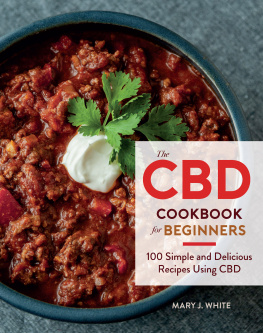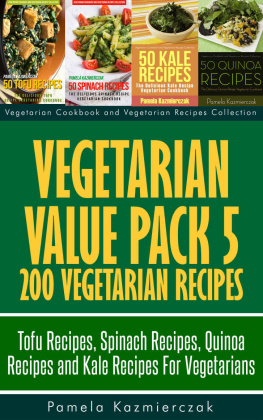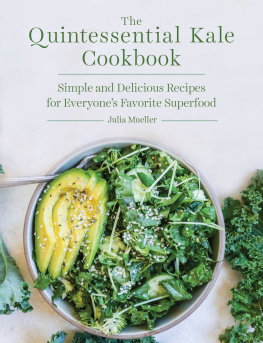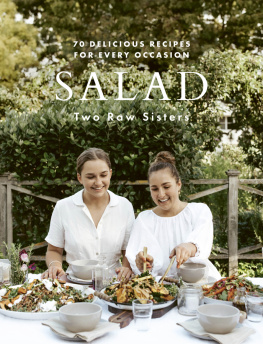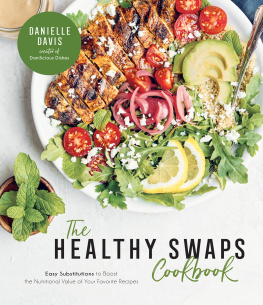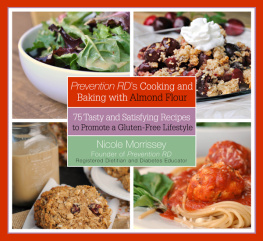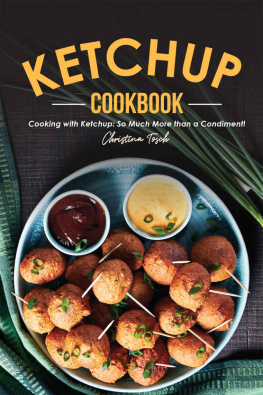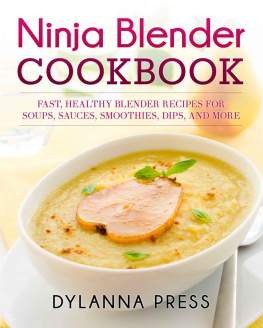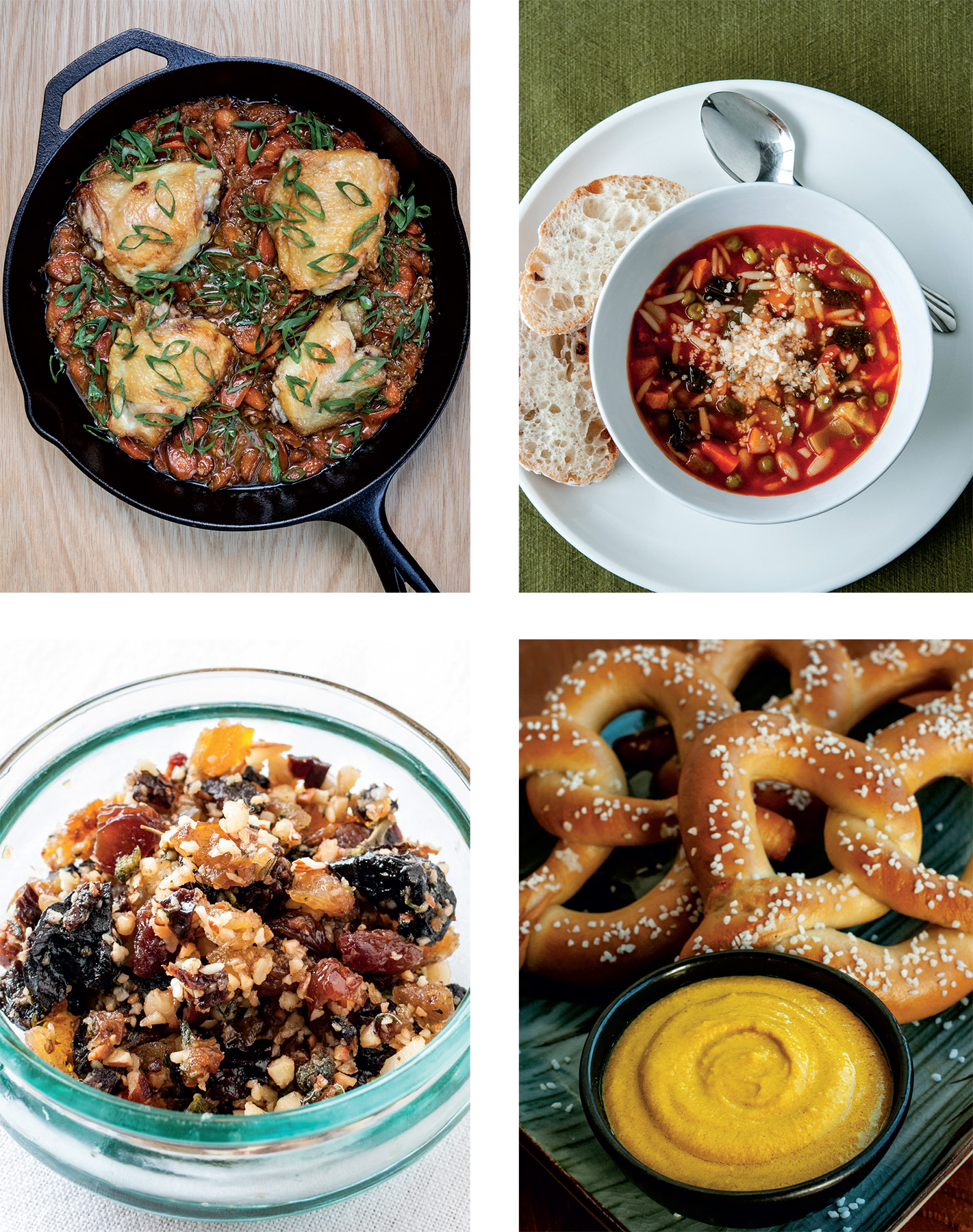Copyright 2019 by Houghton Mifflin Harcourt Publishing Company
Interior text by Mary J. White
Photography by Valerie McKinley
All rights reserved
For information about permission to reproduce selections from this book, write to or to Permissions, Houghton Mifflin Harcourt Publishing Company, 3 Park Avenue, 19th Floor, New York, New York 10016.
hmhbooks.com
Library of Congress Cataloging-in-Publication Data
ISBN 978-0-358-34363-9 (pbk)
ISBN 978-0-358-35337-9 (ebk)
v2.1119
This book is dedicated to my guys Colin and Aaron, the best food testers anyone could ask for.
Introduction
If youre reading this cookbook, first of all, thank you! Ive been teaching how to cook with cannabis for years now, and helping people feel better is one of the great joys in my life. A few years ago I was suffering with chronic pain and taking a lot of pills for it, but I wasnt getting better. I tried a medicated cookie and was astonished at the relief I felt. I immediately started to learn all I could about medical cannabis and started teaching cooking classes. In my years of teaching cooking with cannabis, Ive found many people just want to feel bettertheyre not interested in the recreational side of things.
In this cookbook, Im going to show you how to use and get the benefits from CBD, that incredible compound found in Cannabis ruderalis, or hemp. CBD is just one of the many beneficial compounds in cannabis. Ill also share resources on how and where to buy your hemp at the end of this book.
Before we get all nervous about the word cannabis, lets clarify. There are three primary types of cannabis: Cannabis sativa, Cannabis indica, and Cannabis ruderalis. If you visit a dispensary, youll see countless hybridscombinations of different strains with all kinds of effectsbut for this book Ill be discussing only C. ruderalis, or hemp, as thats where your CBD will be coming from. While C. sativa and C. indica both contain more than 100 active cannabinoids, including CBD and varying amounts of THC, or delta-9-tetrahydrocannabinol (one of the compounds responsible for getting you high) many people prefer CBD derived from C. ruderalis, because it does not produce a high. Cannabis ruderalisbut lets say hemp from here onby definition has no more than .03% THC, which is not enough for you to get high.
Many people may be scared of cannabis, but cannabis-derived medicine is easily and happily accepted by our endocannabinoid system (neurotransmitters in our nervous system). It can go a long way in helping you feel better, whereas side effects from many pharmaceuticals can be far, far worse. Weve been inundated with inaccurate messages about cannabis since the 1930s, but it is considered one of the best natural medicines in history. For millennia, humans have used cannabis for medicine, and before hemp was outlawed in the 1970s, land animals happily grazed on wild cannabis, providing us with naturally occurring cannabinoids in our food.
Because hemp has been treated as a controlled substance for decades, there hasnt been much scientific research on it. Scientists are only now starting to study the potential benefits of CBD, proper dosing, and possible interaction with other medicines. So, no one can say whether cooking with CBD will be useful as to any particular condition or for any particular person. But, here is what Ive observed:
Ive been making CBD oil for a while for my dear friend Molly, who has issues from type 1 diabetes. She doesnt like the feeling of being high but needed relief from associated physical challenges, including some issues with her hands. After just a couple of weeks ingesting my homemade CBD bites, her hands are fine and she finds her whole system works better. My pal Sara, who had a severe stroke a few years ago, is now walking without a cane thanks to CBD. I also make a coconut oil-based CBD extraction for our fur babies; my cat Hugo J. Treadwell gets it, as do many of my friends overactive dogs. It really helps to calm them down. I could go on and on, but the main message is this: CBD is great natural medicine.
If you are just learning about cannabis, trying products containing CBD is a good starting point. However, you should be very aware of where your products come from. A lot of the CBD products on the market are full of pesticides and heavy metals, among other things. Hemp is a soil cleaner, another of its wonderful properties, but that can mean your hemp might soak up unhealthy contaminants in the soil in which it grows. Look for organic and grown in the U.S. if possible.
A note on cooking with CBD: Its important to me that these recipes are accessible, so all of the ones youll find in this book are relatively easy, and can often be done in 30 minutes or less. Ceramic, glass, and stainless steel are your best bet for bowls, pans, and cooking vesselsaluminum or copper will react with the CBD and give you less-than-delicious results. I encourage you to play with your food and experiment, as the taste of CBD extracts can be challenging to get used to, and everyones taste buds have different preferences. (More on this in the next chapter.)
AN IMPORTANT WORD ABOUT SAFETY AND LEGALITY
Children or pregnant or nursing women should not consume CBD or foods containing CBD. Do not give medicated foods to anyone without their knowledge. Also, it is unknown whether CBD may interact with other medicines. In addition, we recommend exercising caution if you choose to mix CBD with alcohol, including when preparing any recipes herein. The information herein does not constitute medical advice. Check with your health care provider prior to using CBD if you have questions.
As of the time of printing, hemp is legal pursuant to federal laws. However, some states classify hemp as a controlled substance (marijuana) under state law. The recipes and discussion herein do not constitute legal advice or advocate for violation of any laws.
FROM CANNABIS to CBD
CBD Dosage Guidelines
Its good to know how much CBD is in what youre making. However, there are a lot of variables: the quality of your hemp, your oven temperature, your preparation methods, and more. Most of us are used to Western medicine, where everything is measured in exact milligrams, but you are infusing different mediums (fats, alcohol, glycerin) with a natural plant material, so dosing needs to be approached differently. Cooking with cannabis is very much about learning what works for you. The effect you get from what you cook depends on the strain, how it was prepared, and the amount ingested, as well as other variables, so be aware and listen to your body.
Of course, one of the glorious things about using CBD is that it truly cant hurt you. Unlike opioids, CBD doesnt affect the brain stem, and there is no psychoactive effect; humans cant overdose on CBD. To give you a good general idea, estimate 50 to 70 milligrams of CBD per gram of hemp material.
So, if you have 1 ounce (28 grams) of hemp, after you decarboxylate it, youll have anywhere from 1,400 to 1,960 milligrams of CBD and other cannabinoids available in that 1 ounce of hemp.
1 gram of cannabis = 50 to 70 milligrams of CBD
1 ounce (28 grams) of cannabis = 1,400 to 1,960 milligrams of CBD
Again, with CBD its not about the number of milligrams, its how you feel, so pay attention to your body. Use a little more or a little less; experimenting is half the fun!
Decarboxylating Cannabis

